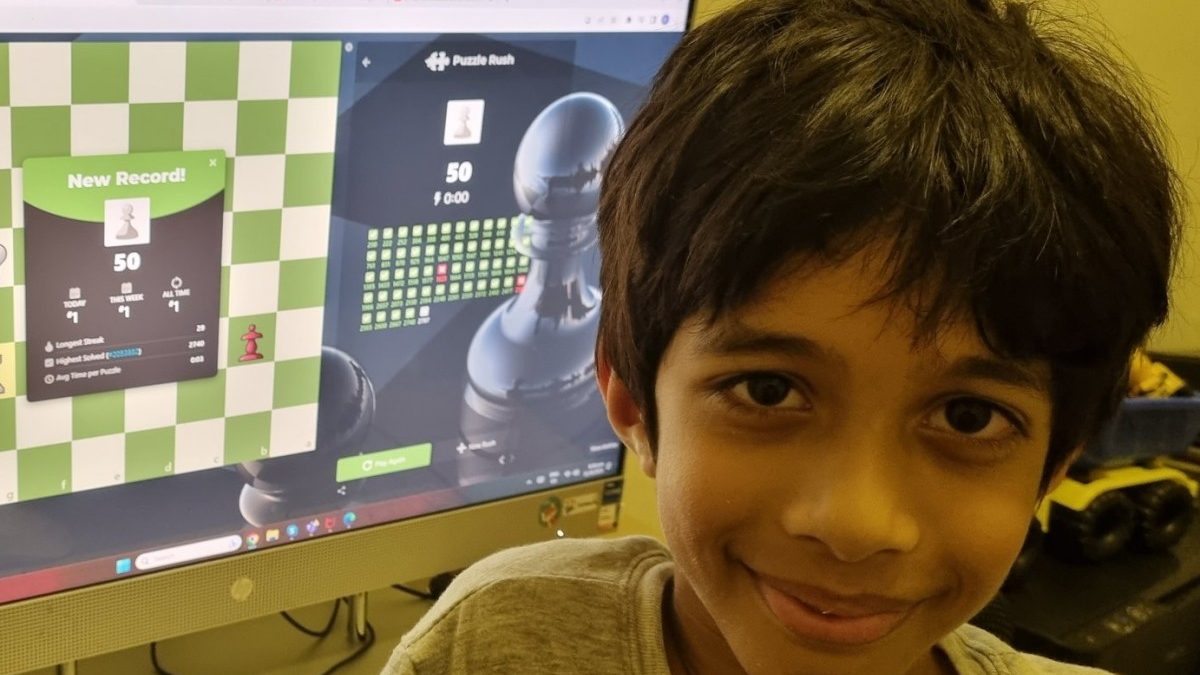One of the two most prestigious team events in chess, the World Team Championship (the other being the Chess Olympiad), is being held in Khanty-Mansiysk, Russia. This biyearly event features 10 of the strongest chess teams from all continents around the globe. These teams face each other in a single round robin format. The Indian contingent is competing in both open and women’s sections. In the open section, the team includes Vidit Gujrathi, Adhiban Baskaran, Sasikiran Krishnan, Karthikeyan Murali and Parimarjan Negi, while in the women’s category, the team consists of Harika Dronavalli, Padmini Rout, Tania Sachdev, Eesha Karvade and Vijayalakshmi Subbaraman.
India hasn’t had a great run in the past at this event. In fact, it’s only once that the Indians were able to secure a medal. That was back in 2009 in Turkey when, in the open section, the team secured a bronze. Seeded fourth in the open and fifth in the women’s section, this year too, India isn’t one of the strongest teams at the event. Also, the absence of the Indian number two, Pentala Harikrishna, in the open team definitely weakens the team slightly.
Also worth noting is the fact that Negi will be playing after a long period of hibernation. On the brighter side, there’s Gujrathi, who is in terrific form at the moment and has recently won bronze at the Asian Individual Championship; Baskaran is another dynamic player who has proved that he can lock horns with the best in the world with his outstanding performance at the Tata Steel Masters earlier this year; there’s Sasikiran, who brings in a plethora of experience to the team besides being in fantastic form having won the Capablanca Memorial this year. In the women’s section, Dronavalli is definitely India’s biggest trump card. But even besides her, all other players are highly experienced and know how to make their way through events of this calibre.
In the first round, India was paired against Poland in the open section and against Georgia in the women’s. Despite being the lower seed in both sections, things looked good at the start. Gujrathi was the first one to strike. Playing with white pieces against the much higher-rated Radoslaw Wojtaszek, the Indian No 3 came up with a fresh idea in the opening which he later said he had prepared with the Dutchman, Anish Giri.
This caught Wojtaszek off guard and Gujrathi was able to clinch full point. With this win, the 22-year-old Indian inched another step closer to becoming the fourth Indian to cross the 2700 Elo mark after Viswanathan Anand, Sasikiran and Harikrishna. With the rating gained from this win, he had reached 2697.5 in live ratings!
India’s chances to win the round looked good after Gujrathi’s win. But shockers came on boards two and three when Baskaran lost in an equal position against Jan-Krzysztof Duda, and Piorun Kacper outplayed Murali Karthikeyan in a sharp tactical battle. Playing on board four, Negi had a promising position against Mateusz Bartel but he failed to convert. With this draw, India narrowly lost to Poland with a score of 1.5-2.5.
The women’s team too had good winning chances. While Rout and Karvade drew their games against Bela Khotenashvili and Lela Javakhishvili, Dronavalli clinched the lead for India with her win over Nana Dzagnidze. Vijayalakshmi was also a piece up in her game against Nino Bastiashvili and it looked like the women were cruising to victory. Unfortunately, the Indian International Master made an inexplicable blunder on move 58 and lost the game and the match was drawn.
Going into the second round, India was pitted against China, the top seed of the tournament, in the open section. Gujrathi proved his mettle yet again and held the world No 10, Ding Liren to a draw with black pieces. This brought him another step closer to the 2700 rating mark. His live rating after this game had reached 2698.7! However, as International Master Sagar Shah pointed out after the game, Gujrathi could have tried to play for a win in the final position without any risk of losing. Had he won, India would not only have drawn against the top-seeded team, Gujrathi might also have entered the 2700 club. But then again, it might be a bit too optimistic to say he would have won for sure if he had pressed because although his position was surely better, it was by no means winning.
Sasikiran also showed his experience on board three and had his opponent Wei Yi on tight ropes. But in the end, the Chinese prodigy defended well to hold on to a draw. Negi, the man who is back after spending a long time away from chess, was able to hold yet another higher-rated opponent in the second round. This time it was the 2720-rated Li Chao. The game which decided the match was the second board encounter between Yu Yangyi and Baskaran.
Playing with white pieces, Baskaran repeated the opening he had deployed to beat Dmitry Andreikin at the Tata Steel Masters earlier this year, but the Chinese Grand Master was able to come out of the opening with a decent position. By the end of the first time control, Yu Yangyi had convincingly outplayed the Indian and had two extra pawns in the endgame. It didn’t take long for Baskaran to throw in the towel in the double-rook endgame. This was the second loss in a row for both Baskaran and India.
Although the result in the open section wasn’t exactly inspiring, the women’s team gave Indian fans something to cheer for by beating the United States by a one-point margin. A small surprise came on the top board when the American top seed, Anna Zatonskih offered Dronavalli a draw after merely nine moves of play. Given that Dronavalli had black pieces, it was in the benefit of the team that she took the draw which she did. On board two, Sachdev won a splendid game to outplay Sabina Foiser and made the most of her having the whites. Hopes really went up when International Master Vijayalakshmi’s opponent, Akshita Gorti misplayed a completely winning position and let half-a-point slip away. It was now up to Rout to defend a difficult position in which she was a couple of pawns down. In what looked like an insurmountable task, Rout defended tirelessly to cling on to a draw.
Round three featured India’s face-off against the Belarus in the open section. The Belarusian team is seeded seventh at the event which made Indians the favourites to win in this encounter. On board one, Gujrathi was playing against his first lower-rated opponent of the tournament, Sergei Zhigalko. He also had white pieces in this round and would very much have liked to win. Going into a Queen’s Indian Defence, the Indian had decent pressure on his opponent’s position. But a tactical trick allowed the Belarusian to win a pawn, but Gujrathi also got compensation by disrupting his opponent’s king-side pawn structure.
After 49 moves of play, the players agreed a draw in a dead equal rook and pawn endgame. Sasikiran and Negi also drew against their lower-rated opponents. Baskaran, however, was desperate for a win. Not only because India would win the match if he won, but also to set a comeback after two consecutive losses in the tournament. Playing with black pieces, the Chennai lad kicked off with a Sicilian Defence, probably with the hope of a sharp game. But his opponent drifted into an anti-Sicilian line, the Rossolimo Variation. As play progressed, Baskaran’s opponent, Vladislav Kovalev, erred on move 25, misjudging the position after a series of exchanges. Baskaran made no mistake in capitalizing upon this error by his opponent and forced resignation with a neat exchange sacrifice.
The third round wasn’t an easy one for the Indian women’s team as they faced the closely-matched Ukraine. Both teams had an almost similar average rating. With an average rating of 2427 the Indian team was seeded fifth, while the Ukrainians were seeded sixth with an average rating of 2422. On board one, Dronavalli had a promising position against the former world women’s champion, Anna Ushenina, but was only able to a draw with white pieces.
The game opened with the Paulsen variation of the Sicilian Defence. Ushenina sacrificed a pawn in the opening which Dronavalli took. The game eventually fizzled into a double rook endgame where Dronavalli had an extra pawn. But she slipped and allowed her opponent to get away with a draw.
Karvade also had a promising position against Iulija Osmak but she too had to be content with a draw. Rout was also held to a draw by Nataliya Buksa in an unorthodox Spanish Opening. After three draws on three boards, the deadlock was broken in Sachdev’s game against Inna Gaponenko. Sachdev opened with the Kan Variation of the Sicilian Defence which her opponent chose to counter with the Maroczy Bind setup.
Gaponenko got an advantage in the middle game, but Sachdev was able to fight her way back into the game. Gaponenko then gave up two pieces for a rook and tried to create chances for herself as she had an outside passed pawn in the resulting position. The position was still pretty equal, however, until Sachdev made a decisive error on the last move of the time control by offering an exchange of rooks instead of bringing her king out. This let Gaponenko roll her queen rook pawn down the board and Sachdev had to resign after 83 moves.
After three rounds, the Indian team is ranked seventh in the open section and sixth in the women’s section. There’s still a lot of chess to be played as six more rounds remain. You can find the full standings after three rounds in the cross-table below:
Aditya Pai is an editor for ChessBase India .


)




)
)
)
)
)
)
)
)